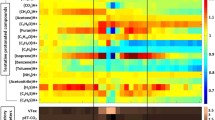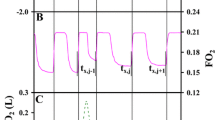Abstract
Highly soluble gases exchange primarily with the bronchial circulation through pulmonary airway tissue. Because of this airway exchange, the assumption that end-exhaled alcohol concentration (EEAC) is equal to alveolar alcohol concentration (AAC) cannot be true. During exhalation, breath alcohol concentration (BrAC) decreases due to uptake of ethanol by the airway tissue. It is therefore impossible to deliver alveolar gas to the mouth during a single exhalation without losing alcohol to the airway mucosa. A consequence of airway alcohol exchange is that EEAC is always less than AAC. In this study, we use a mathematical model of the human lung to determine the influence of subject lung size on the relative reduction of BrAC from AAC. We find that failure to inspire a full inspiration reduces the BrAC at full exhalation, but increases the BrAC at minimum exhalation. In addition, a reduced inhaled volume and can lead to an inability to provide an adequate breath volume. We conclude that alcohol exchange with the airways during the single-exhalation breath test is dependent on lung size of the subject with a bias against subjects with smaller lung size.





Similar content being viewed by others
Notes
A list of abbreviations used in this paper is shown in Table 1.
The blood:breath ratio is equal to the ratio of end-exhaled alcohol concentration divided by blood alcohol concentration (EEAC/BAC)
The Blood–Breath Ratio (BBR) is a commonly used term in forensic science. Because alcohol is a very highly soluble gas, the ratio of concentration in the blood normalized by that in the breath is a very large number (typically around 2000). For a given Blood Alcohol Concentration (BAC), the Breath Alcohol Concentration (BrAC) is about 1/2000 x BAC. With smaller lung volumes, the BrAC is greater, hence the BBR (= BAC/BrAC) is lesser. In one case the BrAC is in the numerator (BrAC/AAC). In the other case, the BrAC is in the denominator. So a greater BBR is the same as a lesser BrAC/AAC.
References
American Thoracic Society. Lung function testing: Selection of reference values and interpretative strategies. Am. Rev. Respir. Dis. 144:1202–1218, 1991
Anderson J. C., A. L. Babb, and M. P. Hlastala. Modeling soluble gas exchange in the airways and alveoli. Ann. Biomed. Eng. 31:1402–1422, 2006
Anderson, J. C. and M. P. Hlastala. Breath tests and airway gas exchange. Pulm. Pharmacol. Ther. in press, 2006
George S. C., A. L. Babb, and M. P. Hlastala. Dynamics of soluble gas exchange in the airways. III. Single-exhalation breathing maneuver. J. Appl. Physiol. 75:2439–2449, 1993
Harding, P. Methods for breath analysis. In: Medical–Legal Aspects of Alcohol (4th ed.), edited by Garriott J. C. Tucson: Lawyers & Judges Publishing Co., 2003, pp. 185–211
Hildebrandt, J. Structural and mechanical aspects of respiration. In: Textbook of physiology, edited by Patton H. D., Fuchs A. F., Hille B., Scher A. M., and Steiner R. Philadelphia: W.B. Saunders Co., 1989, pp. 991–1011
Hindmarsh A. (1981) LSODE (computer software). Livermore, CA: Laurence Livermore Laboratory
Hlastala M. P. (1998) The alcohol breath test – a review. J. Appl. Physiol. 84:401–408
Hlastala M. P. (2002) Invited editorial on “the alcohol breath test”. J. Appl. Physiol. 93:405–406
Jones A. W. (1983) Role of rebreathing in determination of the blood–breath ratio of expired ethanol. J. Appl. Physiol. 55:1237–1241
Jones A. W., Andersson L. (2003) Comparison of ethanol concentrations in venous blood and end-expired breath during a controlled drinking study. Forensic Sci. Int. 132:18–25
Jones A. W., Andersson L. (1996) Variability of the blood/breath alcohol ratio in drinking drivers. J. Forensic. Sci. 41:916–921
Ohlsson J., Ralph D. D., Mandelkorn M. A., Babb A. L., Hlastala M. P. (1990) Accurate measurement of blood alcohol concentration with isothermal rebreathing. J. Stud. Alcohol 51:6–13
Skåle A. G., Slørdal L., Wethe G., Mørland J. (2002) Blood/breath ratio at low alcohol levels: A controlled study. Ann. Toxicol. Analytique. XIV:41
Tsu M. E., Babb A. L., Ralph D. D., Hlastala M. P. (1988) Dynamics of heat, water, and soluble gas exchange in the human airways: 1. A model study. Ann. Biomed. Eng. 16:547–571
Acknowledgments
This work was supported, in part, by National Institute for Biomedical
Imaging and Bioengineering Grant T32 EB001650 and by National Heart,
Lung, and Blood Institute Grants HL24163 and HL073598.
Author information
Authors and Affiliations
Corresponding author
Rights and permissions
About this article
Cite this article
Hlastala, M.P., Anderson, J.C. The Impact of Breathing Pattern and Lung Size on the Alcohol Breath Test. Ann Biomed Eng 35, 264–272 (2007). https://doi.org/10.1007/s10439-006-9216-3
Received:
Accepted:
Published:
Issue Date:
DOI: https://doi.org/10.1007/s10439-006-9216-3




